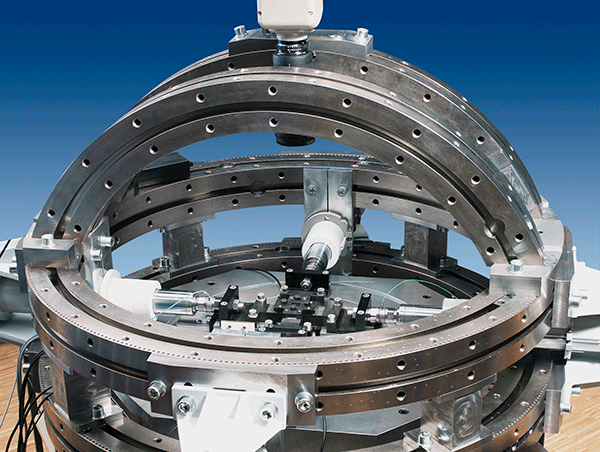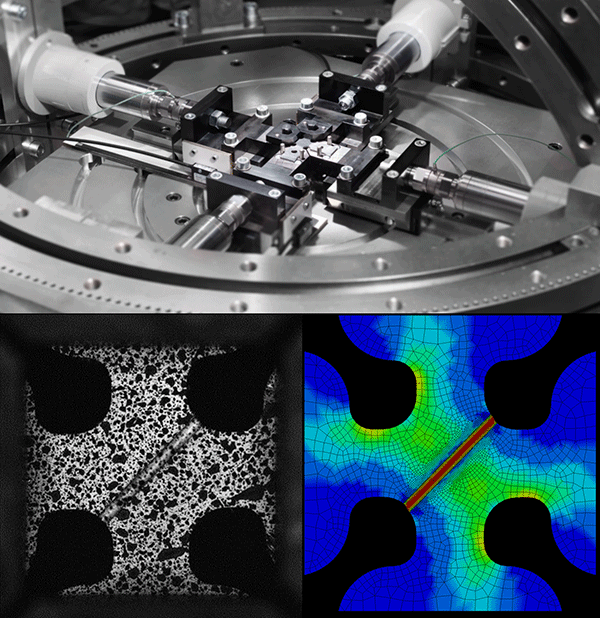High-strenght steel under multiaxial loading


The deformation and failure behavior of a material is experimentally often studied on simple loading cases. To do so, uniaxial tensile and compressive tests are for example conducted. In reality however, materials often fail under complex, multiaxial loading. High-strength steels are used in order to protect passengers from gunfire. During impact of a projectile, complex loading conditions, such as tensile and compressive loads but also bending and shear stresses, occur, e.g. depending on the angle of impact. In addition to that, such an event is a highly dynamic process, which can also be characterized by a significant local increase in temperature.
At EMI, material tests are carried out with a special multiaxial test bench in order to reproduce such loads in the laboratory. Thus, specimens made from a range of materials, from steel to textile fabric, can be exposed to various loading combinations using up to six actuators that can be moved separately. The loading rate can be varied between quasistatic and dynamic in a practice-oriented manner. A database is thus experimentally created to be able to exactly simulate specific loading scenarios by means of numerical methods. The aim is the predictable modelling of deformation and failure behavior in dependence on stress multiaxiality, strain rate and prior damage. High-strength steels thus become predictable regarding extreme application conditions and threat scenarios.